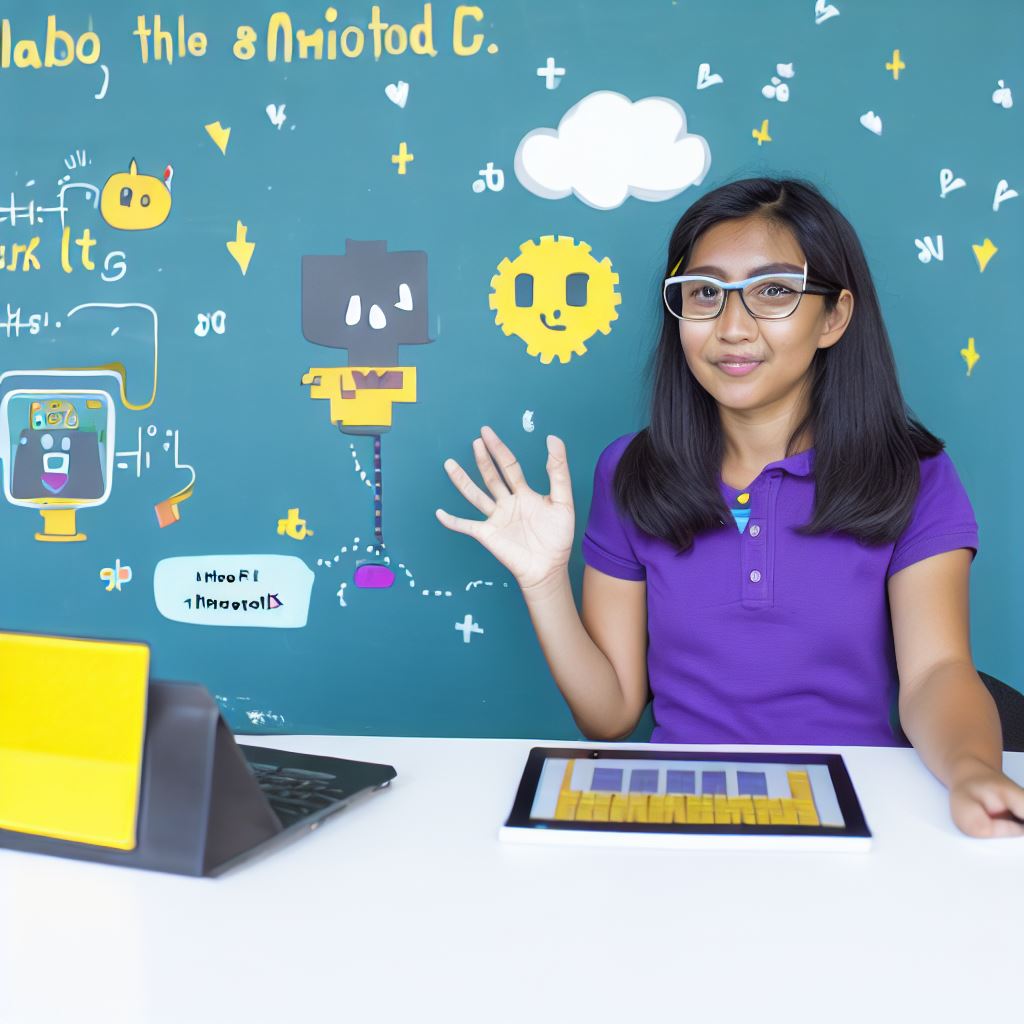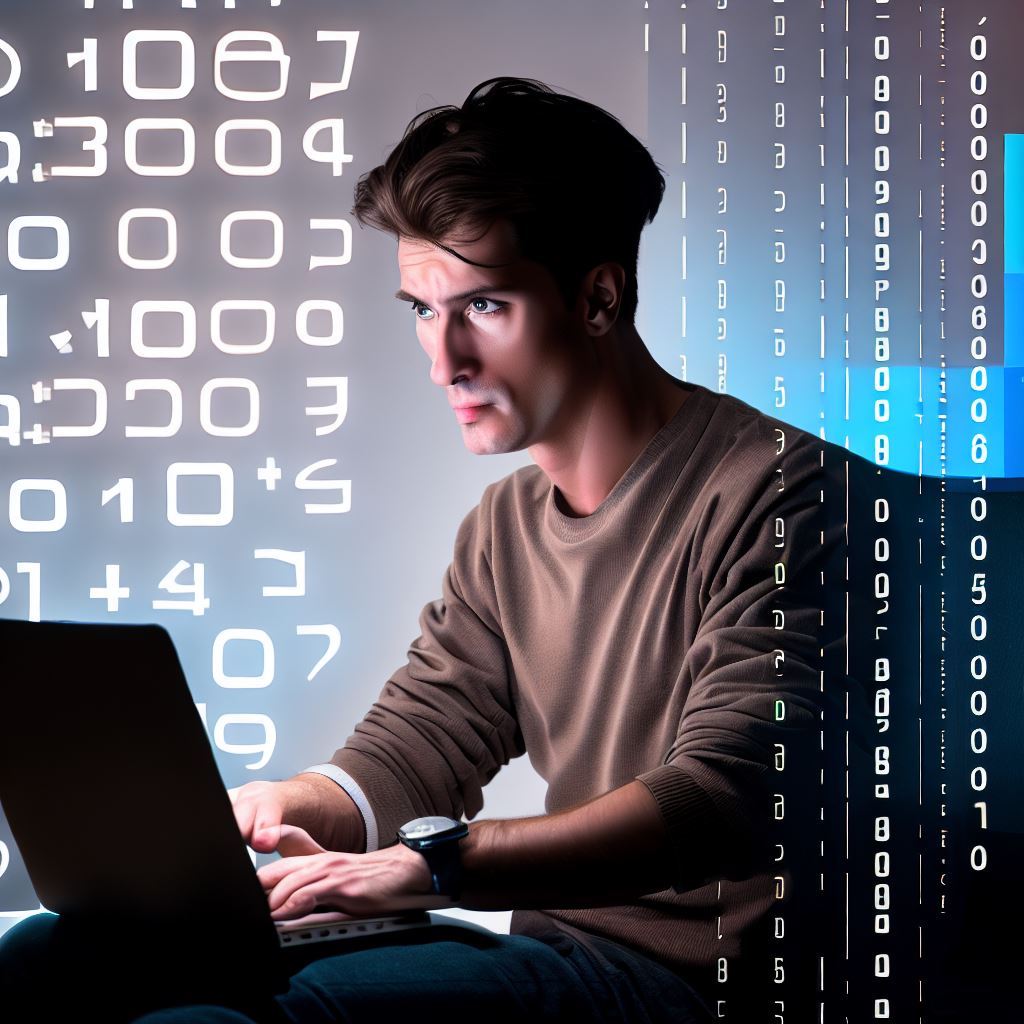Introduction
Welcome to the world of Scratch, a revolutionary coding platform that transforms the way we learn programming.
Scratch is not just a tool, but a playground where you can create, experiment, and learn. It’s designed with simplicity in mind, using a drag-and-drop interface that makes coding accessible and fun.
In the ever-evolving digital landscape, infusing the process of learning code with fun is paramount. As coding becomes increasingly indispensable, it is essential that it doesn’t just remain a complex and daunting task.
Learning should be an engaging journey, especially when it comes to a skill as valuable as coding.
This blog post delves into the exciting realm of Scratch, where coding is not just a theoretical exercise but a thrilling adventure.
Scratch offers a playground for creativity, problem-solving, and innovation. It transforms coding into a hands-on experience, where learners build, experiment, and create, all while having fun.
Traditional coding education often falls short of capturing the attention of young learners.
However, Scratch is making learning code fun, breaking down barriers, and opening up a world of possibilities.
So let’s dive in and start our exciting journey with Scratch today!
Overview of Scratch
A. Definition of Scratch
- Scratch is a visual programming language that allows users to create interactive stories, games, and animations.
- It is designed to be beginner-friendly, making it accessible to people of all ages and backgrounds.
- The simplicity of its drag-and-drop interface eliminates the need for complex coding syntax.
B. Brief history and development of Scratch
- Scratch was developed by the Lifelong Kindergarten Group at the MIT Media Lab in 2007.
- It was created with the intention of teaching young learners how to code in a creative and engaging way.
- Since its release, Scratch has grown in popularity and has become a global phenomenon.
C. Features and components of Scratch
- Scratch offers a wide range of features and components that make it a versatile programming tool.
- The sprite editor allows users to create and customize characters for their projects.
- The sound editor enables users to add audio effects and background music to their creations.
- Scratch also provides a library of built-in images and sounds for users to incorporate into their projects.
- The motion blocks allow users to manipulate the movement of sprites on the screen.
- Users can use the control blocks to create loops, conditionals, and other programming structures.
- The event blocks enable users to trigger actions based on user input or specific conditions.
- Additionally, Scratch offers a wide range of extension blocks that extend its functionality.
- These extensions allow users to access additional features, such as using video sensing or controlling hardware devices.
In general, Scratch is a powerful and accessible programming language that makes learning to code enjoyable for everyone.
Its visual interface and user-friendly features allow individuals of all ages to express their creativity and develop problem-solving skills.
By removing the barriers of complex coding syntax, Scratch empowers learners to focus on the logic and creativity behind programming.
Whether creating interactive stories, games, or animations, Scratch provides an interactive platform that nurtures curiosity and fosters a passion for coding.
The impact of Scratch on the education and technology community cannot be overstated.
It has revolutionized the way coding is taught, making it a fun and engaging activity for all individuals, regardless of their technical background.
Tech Consulting Tailored to Your Coding Journey
Get expert guidance in coding with a personalized consultation. Receive unique, actionable insights delivered in 1-3 business days.
Get StartedWith its continued development and growing community, Scratch will undoubtedly continue to inspire and empower aspiring programmers for years to come.
The Benefits of Scratch for Learning Code
A. Visual programming and its advantages
- Scratch utilizes a visual programming language, making it easier for beginners to grasp coding concepts.
- Visual programming allows learners to drag and drop blocks of code, eliminating syntax errors.
- The visual interface in Scratch helps students visualize the sequence and flow of their code.
- With visual programming, learners can immediately see the results of their code, encouraging experimentation.
B. Engaging and interactive coding experience
- Scratch provides a user-friendly interface with colorful characters, backgrounds, and sounds, captivating learners’ attention.
- The ability to create interactive stories, games, and animations in Scratch keeps learners engaged throughout the coding process.
- Students can collaborate on projects, sharing ideas and building upon each other’s work, fostering teamwork and social interaction.
- Scratch offers a supportive community, allowing learners to share their projects, receive feedback, and inspire others.
C. Encourages problem-solving and critical-thinking skills
- Learning code through Scratch involves breaking down complex problems into smaller, manageable tasks.
- Students must think logically and analytically to solve coding challenges and debug their programs.
- Scratch promotes computational thinking by introducing learners to concepts such as loops, conditionals, and variables.
- Troubleshooting and finding solutions to coding errors, learners develop resilience and perseverance.
D. Fosters creativity and self-expression
- Scratch provides a platform for students to unleash their creativity and bring their ideas to life.
- Learners can design unique characters, create custom animations, and compose original music.
- The ability to share projects globally allows students to showcase their creativity and receive recognition.
- Scratch empowers learners to express themselves through coding and showcases the intersection of art and technology.
In summary, Scratch offers numerous benefits for learning code. Its visual programming approach simplifies coding concepts and lowers the barrier to entry for beginners.
The engaging and interactive nature of Scratch keeps learners motivated and invested in their coding journey.
Additionally, Scratch encourages problem-solving and critical thinking skills, fostering computational thinking abilities.
Finally, Scratch nurtures creativity and self-expression, allowing students to explore the artistic side of coding.
By leveraging these benefits, educators can make learning code enjoyable and accessible to all students.
Read: Advanced Scratch Techniques: Taking Your Projects Further

How Scratch Makes Learning Code Fun for All
A. User-friendly interface and simplicity
Scratch offers a user-friendly interface that makes it easy for beginners to navigate and understand.
Its simplicity allows users to quickly grasp the basics of coding without feeling overwhelmed.
Even those with no prior coding experience can quickly start creating their own projects.
B. Drag-and-drop programming blocks
The drag-and-drop programming blocks in Scratch make coding more interactive and engaging.
Users can easily assemble blocks to create commands, eliminating the need for typing long lines of code.
This visual approach to coding encourages creativity and problem-solving skills.
C. Colorful and customizable sprites and backgrounds
Scratch offers a wide range of colorful and customizable sprites and backgrounds.
Build Your Vision, Perfectly Tailored
Get a custom-built website or application that matches your vision and needs. Stand out from the crowd with a solution designed just for you—professional, scalable, and seamless.
Get StartedUsers can select characters and settings that resonate with their interests or imaginations.
This allows users to personalize their projects and adds a visual appeal to their creations.
D. Interactive animations and sounds
With Scratch, users can bring their projects to life through interactive animations and sounds.
They can program sprites to move, dance, or respond to certain events, making the projects interactive and engaging.
Adding sounds further enhances the overall experience, making it more immersive and fun.
E. Sharing and collaboration features
Scratch encourages collaboration and sharing by providing features that allow users to share their projects with the community.
Users can explore, remix, and learn from other projects created by fellow Scratchers.
This fosters a sense of community and provides a platform for feedback and improvement.
F. Accessible to all age groups and skill levels
One of the key strengths of Scratch is its accessibility to all age groups and skill levels.
Children, teenagers, adults, and even educators can benefit from Scratch in their learning journeys.
Whether you are a beginner or have advanced coding skills, Scratch offers a platform for continuous growth.
In general, Scratch proves ideal for making code learning enjoyable with its user-friendly interface, drag-and-drop functions, colorful customizations, and interactive features.
Moreover, its sharing capabilities and inclusivity enhance the experience for all.
By removing barriers and simplifying the coding process, Scratch empowers users to unleash their creativity and problem-solving skills while enjoying the process of learning to code.
Optimize Your Profile, Get Noticed
Make your resume and LinkedIn stand out to employers with a profile that highlights your technical skills and project experience. Elevate your career with a polished and professional presence.
Get NoticedWhether you’re a young student exploring computer science for the first time or an experienced coder looking for a fun and intuitive platform, Scratch is an excellent choice.
Read: How Teachers are Using Scratch in the Classroom Today
Success Stories: Examples of Fun Projects Created with Scratch
A. Educational games and simulations
- One success story involves a teacher who used Scratch to create a game that teaches math concepts.
- The game allowed students to practice their skills while having fun, leading to improved learning outcomes.
- Another example is a science simulation created by a student, which allows users to explore various chemical reactions.
- This project not only helped the student understand scientific principles better but also engaged other learners.
B. Interactive stories and animations
- One inspiring project involved a group of students who collaborated on a choose-your-own-adventure story using Scratch.
- They developed a captivating storyline with multiple interactive options, enhancing their creativity and storytelling skills.
- Another success story is about a student who created an animated short film with Scratch.
- The film conveyed a powerful message and showcased the student’s artistic talents, gaining recognition in local film festivals.
C. Creative artwork and music projects
- A student used Scratch to design and program a virtual art gallery, showcasing their artwork.
- This project allowed the student to combine their passion for art and technology, attracting a larger audience to their work.
- Another example is a student who used Scratch to compose and produce original music tracks.
- Their music projects received positive feedback, and they even collaborated with other musicians worldwide through Scratch’s online community.
Ultimately, Scratch has empowered learners to create a wide range of fun and engaging projects.
The platform has offered students and teachers a space to explore interests and boost skills, spanning educational games, simulations, stories, animations, artwork, and music projects.
These success stories demonstrate how Scratch has made learning to code enjoyable for all individuals.
Whether students are passionate about math, science, storytelling, art, or music, Scratch offers a creative and interactive environment that encourages innovation and fosters a love for learning.
Read: Scratch’s Impact: Stories of Young Coders and Innovators
Tips and Strategies for Making the Most of Scratch
A. Starting with Simple Projects and Gradually Increasing Complexity
When learning to code with Scratch, it is important to start with simple projects.
This allows you to understand the basics and build a strong foundation.
As you gain confidence and proficiency, gradually increase the complexity of your projects.
This will challenge you and help you grow as a coder.
B. Time Management and Project Planning
Effective time management is crucial when working on coding projects with Scratch.
Set aside dedicated time each day or week to work on your projects.
Plan your projects in advance. Break them down into smaller tasks and set deadlines for each task.
This will help you stay organized and motivated.
C. Utilizing Online Resources and Tutorials
Make the most of the vast resources available online for Scratch.
There are tutorials, documentation, forums, and guides that can assist you in your learning journey.
Explore different websites and platforms that offer resources for Scratch, such as the official Scratch website and other educational websites.
Take advantage of these resources to enhance your understanding and skills.
D. Joining Scratch Communities and Participating in Challenges
Joining the Scratch community can be a valuable experience. Connect with other Scratch users, participate in discussions, and seek feedback on your projects.
Look for Scratch challenges and contests that you can participate in. These can provide additional motivation and inspire you to think creatively.
They also offer opportunities to showcase your work to a wider audience.
Collaborate with other Scratch users on projects. This can enhance your learning and give you new perspectives.
Sharing ideas and working together can lead to innovative and exciting projects.
Basically, by following these tips and strategies, you can make the most of Scratch and have a fun and rewarding coding learning experience.
Read: Coding Bootcamp Curriculum Breakdown: What You’ll Learn
Conclusion
A. Recap of the benefits and features of Scratch
Scratch provides a user-friendly platform for learning to code, making it accessible to people of all ages.
With its visual interface and drag-and-drop functionality, Scratch eliminates the barriers that often discourage beginners.
It allows users to be creative and express themselves through coding projects, encouraging problem-solving and critical thinking skills.
Scratch also promotes collaboration and sharing, allowing users to learn from one another and contribute to a global community of coders.
B. Encouragement to explore Scratch and start learning code
If you haven’t already, give Scratch a try! It’s a fantastic tool for anyone wanting to delve into the world of coding.
Whether you’re a student, a professional, or simply curious about coding, Scratch provides a fun and engaging way to learn.
Don’t be intimidated by the idea of coding – with Scratch, you’ll be surprised at how quickly you can create interactive stories, games, and animations.
C. Closing thoughts on the magic of Scratch in making coding enjoyable for everyone:
The true magic of Scratch lies in its ability to transform coding from a daunting task into an enjoyable and creative experience.
By providing a playful environment, Scratch sparks curiosity and inspiration. It encourages exploration and self-expression, empowering learners to take control of their own learning journey.
Scratch’s impact goes beyond teaching code; it cultivates important skills such as problem-solving, collaboration, and computational thinking.
With Scratch, anyone can discover the joy of coding and unleash their creativity in the digital world.
Start your coding adventure with Scratch and unlock a world of possibilities!




